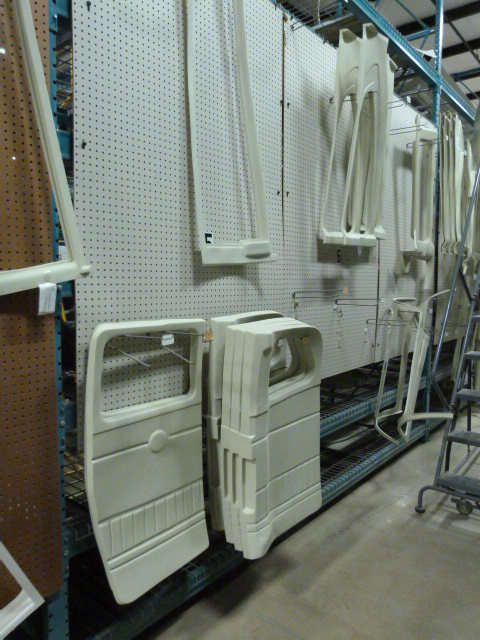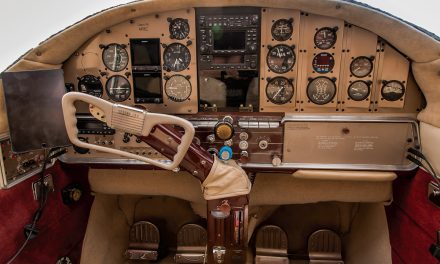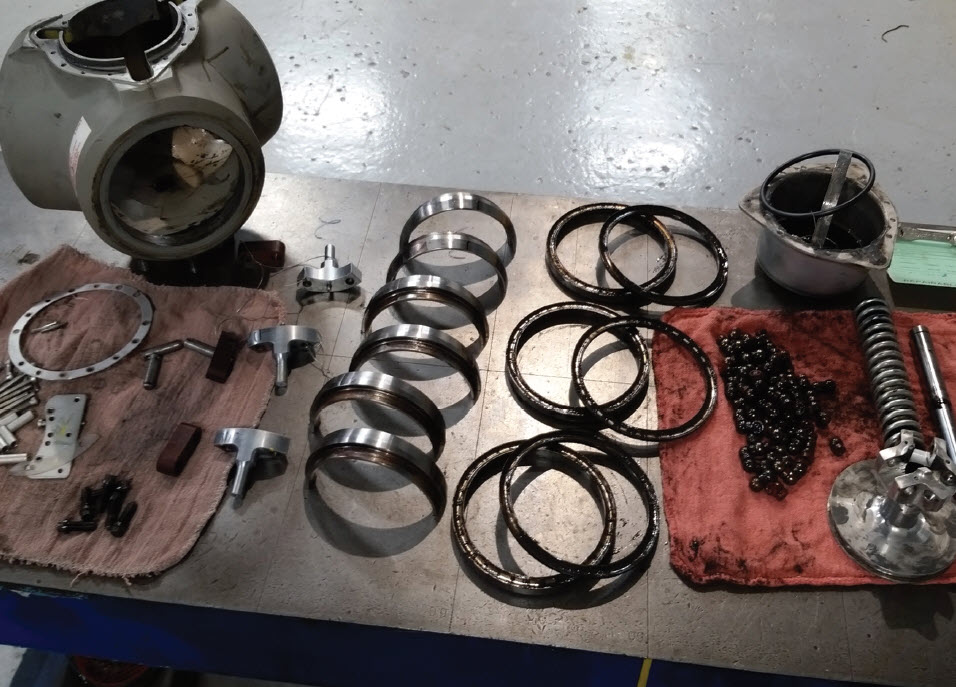Cessna Interior Plastic article by Jim Cavanagh from a past issue of Cessna Owner magazine
A few months back we ran a story on the refurbishing of an airplane, and the author mentioned that because of the costs of interior parts, he elected to repair the existing parts and then, because of the repairs, upholster them with various materials to match the interior. In the piece, he says that this was much cheaper than buying all new parts.
Well, I gotta disagree…at least a bit. I have rebuilt probably fifteen airplanes and I have done about everything a guy can do to get the interior looking good. I have replaced, repaired, repaired and painted, repaired and upholstered, and even fabricated my own parts. Each and every one of these can be done both legally and illegally, according to the letter of the FARs, depending on a number of items. I’m a huge proponent of owner maintenance and saving money where you can, but with airplanes, sometimes you have to bite the bullet. So let’s talk about what you can do, what you need to do, and what you can afford to do when you want to snazz up the old bird.
Why to Update Cessna Interior Plastic
First of all, while they might not seem all that important, interior parts (including Cessna interior plastic) are actually a very high priority with the FAA. A cabin fire can either be quenched or can virtually explode into a fireball, depending upon the materials used. In an enclosed cabin, the latter is not a good thing. Cessna interior plastic trims, carpeting, cloth seat covers, and paneling have to be fire retardant to a specific degree, as dictated by Part 61. This FAR explains the test procedure and the rates at which a material can burn. An approval of the material can be made by either an IA conforming to the FAR or by an independent company that will certify the material. Skandia, Inc., near Rockford, IL, is one such company. These guys have been approving interior components for years, and are happy to test materials that an owner or a shop might want to send them. It’ll cost a bit more than Joe Blow Mechanic, but it’s neat and well documented, and there is absolutely no question that the procedure has been done right.
Before we go on, it MUST be said: The important aspect of burn testing a material is not to get it legal; rather it’s to ensure that you and your family and friends will not be killed should a fire occur. Whether the part is plastic or fiberglass or upholstered, it needs a burn cert. I lost a very good friend and his beautiful girlfriend when they burned up in a Bonanza sitting on the ground at a run-up ramp. No one heard a word or saw the smoke until it was too late. The outside of the airplane looked fine, but the interior and the souls on board were gone. We do not want something like this to happen simply because we didn’t take the time to see how fast a new carpet burns. At the time, I was young and dumb and had put new carpeting in my airplane thinking “Hey, it’s only carpet.” I immediately pulled it out, set a torch to it, and watched it disappear before my eyes in just seconds. It was a very emotional and poignant epiphany. Mea Culpa, Y’all!
The FARs read that if an OEM factory offers a specific part for an airplane, the owner is required to use it—no matter what the cost. An STC-PMA’d part is allowable…if the paperwork is correct. A part from a salvaged aircraft is not considered legal unless there is a direct paper trail to the airplane it was removed from and its TC data. Only if a part is out of production and out of stock is an owner allowed to create or have a part created under his direction. Sort of defies common sense, but such are the ways of bureaucracy, and a paper trail is the only way to assure that a part is fireproof.
It’s funny how some owners overlook the real intent of an FAR in order to save a few bucks. There seems to be a disconnect between cost and reason in aviation, and while (thank goodness) bending the rules doesn’t always lead to wholesale death and destruction, when the right combination of factors combine, it can be traumatic in the worst sense.
Should You Update or Replace Your Cessna Interior Plastics?
For this piece, I want to fill you in on the realities of upgrading your Cessna interior plastic parts. Notice that I did not say replacing? You do not always have to replace. What you must do, however, is ensure that the parts fit, look good, and are burn certified. That is really all you should think about. Getting these three things to work out for you is where time and money come into play, but, hell, that’s just life!
A part can be upgraded in many ways and by taking several different steps as necessary. Going up the price scale, you can: wash and clean a part, paint it, repair and paint it, repair and cover it, replace it with an OEM piece, replace it with an aftermarket piece or, under certain circumstances, an owner may even fabricate a new part. It’s also important to note that you do not have to replace all of your parts. If you have good old parts, keep them; and whatever you do with the new parts do to them too.
Paint
The best (least expensive) option is painting—a topic we will cover more in-depth in an upcoming issue. You can repair the piece if you have to, but you must do a clean, neat job. Before you paint, be sure to wash and clean the part to remove any oil and stains. This will give all of the parts, new and old, the same color, finish, and sheen. As for the paint itself, I recommend using a flex paint designed to prevent chips, cracks and “spider webbing.”
Cover
Depending on your vision, there’s the option of upholstering all or some of the parts. Covering your old parts can fix a lot of problems. You can reinforce and repair a broken part “quick and sloppy” and, because it’s going to be covered, you won’t have to worry about how it looks. You may also avoid the horrendous factory prices for new replacement parts. While covering can be very tasteful and nice-looking, it can also be economically misleading. Typically, you have to repair the part, buy the material and adhesives, ensure the burn certification, and find someone to do the work. Covering is made even more difficult by the nature of some parts. Just try to mold cloth or leather to the complex curves of interior parts—especially those going around or into corners! Fabrics and materials can only stretch or compress so far without wrinkling, and sewing from a pattern is the only option. Of course, it takes time to make a pattern and to find the right material that will conform to the task at hand. You’ll also need to have the materials (including the glues you use) burn tested before you can actually begin the process of covering the parts. Then when you’ve finished, you then have to hope the added thickness will allow for a good fit and the added weight will not affect EW too grossly. Doing it yourself will help, but it takes time and momentum. Realistically, most owners do not have the skill or often the patience to get all of this done in a halfway timely manner. Their ultimate cost will depend on the fees charged by their upholstery shop or mechanic.
Replace
If you’re replacing some parts, say a window trim, a door panel, or perhaps carpeting or seat covers, what do you do? If it is just a part or two, you suck it up and buy a replacement part.
Hopefully, you have the common sense not to buy from the OEMs. Your first call might be to Steve Wentworth or White Industries to try to find a good used part off of a salvaged airplane.
The good thing about used parts is that they are relatively cheap. The bad thing is that they’ll likely be old, used up, or very thin. Plus, the holes might not line up. Most parts are put on during production and are fit and drilled freehand. Piper is the only company that has a number of predrilled parts that match the airframe holes.
The rest of this article can be seen only by paid members who are logged in.Have a website login already? Log in and start reading now.
Never created a website login before? Find your Customer Number (it’s on your mailing label) and register here.
Still have questions? Contact us here.






